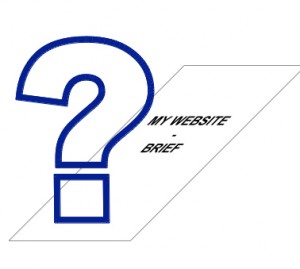Twitter and other Social Media tools have been getting a lot of press recently, not always of the good kind. What with the scandal around ‘that footballer who’s name nobody could say’ and more recently with the riots occurring around England, people who haven’t used the social media tools in question could be forgiven for thinking that Twitter & Facebook are used by gossips and hooligans with nothing better to do with their time than cause trouble.
I reluctantly joined Facebook several years ago as I was becoming increasingly aware of the need to use it as a tool for online engagement (a posh way of saying you want to interact with your customers and web site users). I say reluctantly because I am a naturally private person, I have worked in the IT industry since my days at university and I am very skeptical about data security. Initially I joined using the excuse of it being an experiment for work and swore I would never put any personal data on the site but it wasn’t long before I realised that it was a great way for me to keep in touch with friends, ex colleagues and people I had previously lost touch with from the days before we all had email addresses! I now enjoy sharing tips on great places to go climbing & exploring, holiday photos, and seeing what my friends around the world have been up to. I am very careful with my privacy settings, and I get frustrated at the way Facebook seems to override them, but in general I have accepted that if someone was to get into the Facebook database they would probably be able to work out most of my history including key information such as my mothers maiden name, my address and where I went to school… I have just decided to hope that nobody would wish to!
I tell you this not to scare you about the privacy issues with being on a site such as Facebook but to demonstrate that if something is useful to you, and you are getting something good from it (be it fun, pleasure or business) then often you are going to accept the bad things that go with it. Keeping in touch with my friends around the world is more important to me than the small risk of somebody using my data in a bad way. In the same way Facebook can be used by people who’s moral standpoint I may question, the point is that so can my local pub be used by them – but it doesn’t stop me going there for a pint! In fact my local pub is a great gastro inn and in my opinion is frequented by a far higher caliber of people than the yobs who have been looting the London towns. Never the less I can’t guarantee that one of them wouldn’t be there and I certainly wouldn’t want the place to close just because they had a bad night.
This brings me to Twitter which I joined purely for business reasons; unlike Facebook which I try to guard my ‘friendships’ on closely and keep to real people whom I’ve met, I use Twitter to reach out to new contacts, and have made new friends who I may not have previously met. I’ve only been on Twitter since November 2010, so am a relative novice, but during that time I have witnessed it being used for great social causes. The ability to quickly get the word out about something, and therefore the ability to ask potentially millions of people for advice or help or an opinion, is in itself creating a space where people can share information in a true online community. People share useful information via their blogs and websites, which they then share on twitter; I’ve seen people who have never met sponsor each other for an event because they believe in the cause; and a few months ago I was overwhelmed by the response when I put the word out about a fire at the Scottish Shelter charity’s offices, leaving the charity for homeless people homeless themselves. I was able to pass on so many contacts and potential office spaces it made me proud to be online that day. Unfortunately the press rarely seem to report on this side of Social Networking.
There were calls over the past few days for Twitter/Blackberry/Facebook pages to be shut down to stop the spread of the riots and whilst I totally understand this sentiment, I worry that it shows a complete lack of faith in the majority of our society who are great compassionate beings. The #riotcleanup campaign which resulted in hundreds of people out on the streets helping the residents, businesses and authorities to try and fix the damage caused by a few mindless individuals, shows that Social Media can be used for as much good as it can bad; and the speed at which the social networks policed themselves, trying to minimise the chaos as much as possible was impressive – once everybody had got over the shock that anyone would want to start such atrocities in the first place.
I am generally a glass half full person, I like to see the good in people, and I can’t understand why anybody would want to willfully damage something that belongs to someone else, particularly someone they have never met. I like to think I’m with the majority in this view; and if I’m right then I believe our online networks will continue to do good things, in a quiet and unassuming way, and I salute them for providing the power and passion to come together and clean up when somebody comes along and makes a mess in our back yard.

